What do trees, community, and queer liberation have in common? A few concepts may come to mind: a forest is a patchwork of biodiversity, a community is a web of individual connections, and the survival of queer communities relies on interconnectedness. The thread running through these themes is skillfully explored in Parsons School of Design professor Andrea Geyer’s multimedia exhibit a promise of lightning. The exhibit officially opened on Sept. 4 and will remain on view through Jan. 12 at the Leslie Lohman Museum in Lower Manhattan.
Andrea Geyer, associate professor of new genres at Parsons, is a prolific artist whose work has been shown in museums and galleries globally. She grew up on the edge of Germany’s mountainous Black Forest region, which served as inspiration and material imagery for this exhibit. She described the landscape of her childhood as “a very working class environment,” and a world where she “had no understanding or presence of queer culture whatsoever.” The isolation from her identity experienced in her youth is a consistent theme throughout the exhibit. “No history, no language … it feels like it’s a ghost that lives in you somehow,” Geyer said in reference to this separation of self. Her body of work addresses themes of queerness, German culture, and the practice of creation, memory, and everything in between.
The title of the exhibit, a promise of lightning, comes from Audre Lorde’s 1973 poem “Movement Song.” Geyer described the use of this poem as “a bowing of my head to … her wisdom and her knowledge and how that impacted me.” This nod to Lorde as a fellow queer artist reflects Geyer’s idea of a “network of knowledges” within the queer community.
The exhibit is made up of three components: black and white video footage of trees in the Black Forest, screen printed images of forests embroidered with words and stitched together, and historical photographs of queer gatherings and protests from the museum’s archives. Geyer’s exhibit is the second installment in a series in which Leslie Lohman Museum invites artists to make use of their archival collection in harmony with the artist’s personal work.
On this collaborative process, Geyer said, “the work that’s on view, the quilted paper works, silk screen works, and the videos are in response to those photographs. They were created in response to the research I wanted to do.” Having been born and raised in Germany and disconnected from American queer culture and history, she remarked that “this exhibition gave me an opportunity to spend more time with those histories and really dive in.” She described this process of research, and the resulting artwork, as a meditation on “what’s holding [her] right now” living in New York. The process of interweaving her own personal history with a broader, documented narrative was “an opportunity to really think about my own formation, the kind of formation of queer culture in this country, and bringing those two things together,” she said.
Geyer explained her use of the forest as an overarching structure in two ways. On beginning her exploration of the museum’s archives, she began to think about her own formation as a young, queer person in Germany — “I went back to the forest where I had my first [queer] experiences,” she said. Secondly, she noted the scientific properties of the forest. “We’ve learned that the forest is an incredibly interesting ecological system … where trees support each other, communicate with each other.” Trees share nutrients, information, and water across generations and species, and while Geyer emphasized that this information is “of course, knowledges that Indigenous communities have had for centuries,” she interpreted it as an apt and accessible metaphor for the diversity and intergenerational reliance of the queer community.
Housed in one room of the museum — the images, screens, and video displays climb the walls around a circle of chairs in the room’s center. The chairs enclose a carefully arranged stack of newspapers. This newspaper, titled The Future is Now: An Impossible Archive of Queer Advocacy and Resistance, is an exhaustive document — an archive of around 1,000 queer organizations throughout the United States, with brief descriptions attached to each. Geyer memorialized the process of assembling this archive, with the help of a research assistant, as a joyful process of discovery.
In the face of the “hate-based politics” that might feel overwhelming in today’s climate, Geyer displayed this stack of archival gold to exemplify that there are also “all these people that just do things to make somebody else’s life better,” she said. The newsprint is free for visitors of the museum to take and accessible online.
Geyer started conceiving the exhibit last fall, when Joe Biden was still in the presidential race and political pessimism loomed in her mood. “I wanted to create a space where we [the queer community] could get ready together, you know, plan,” she said, on the intention of the exhibit. She urged an effort to “reclaim museums as a side of civic engagement and civic possibility,” a space in which people can gather. In this spirit, the Leslie Lohman Museum is hosting public salons on Sundays in the exhibition space — the full calendar of which can be found online.
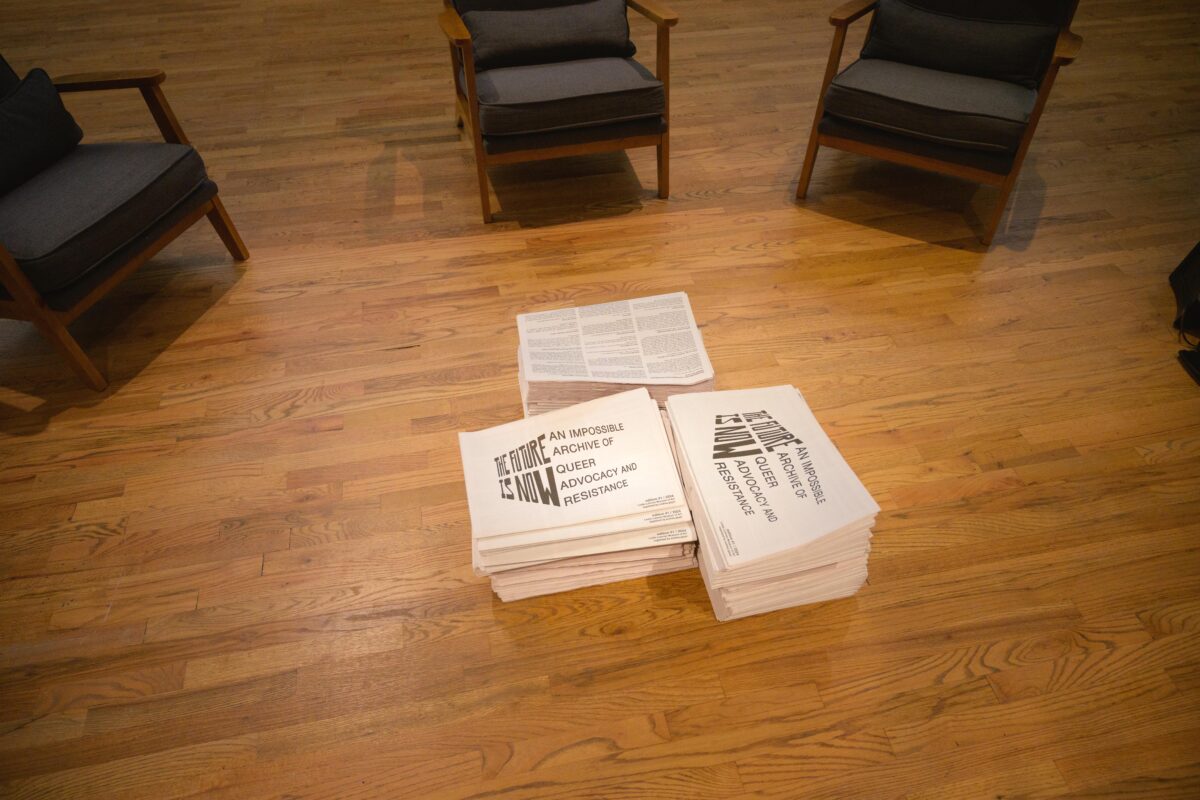
The screen printed images of forest scenes, hand-embroidered with words relating to emotions, memory, queerness, and rebellion, were stitched alongside “an incredible group of mostly New School students,” Geyer said, who worked with her over the summer. According to her, the cross-generational collaboration reflects the communal nature of the space and the themes of interconnectedness — the beating heart of the exhibit.
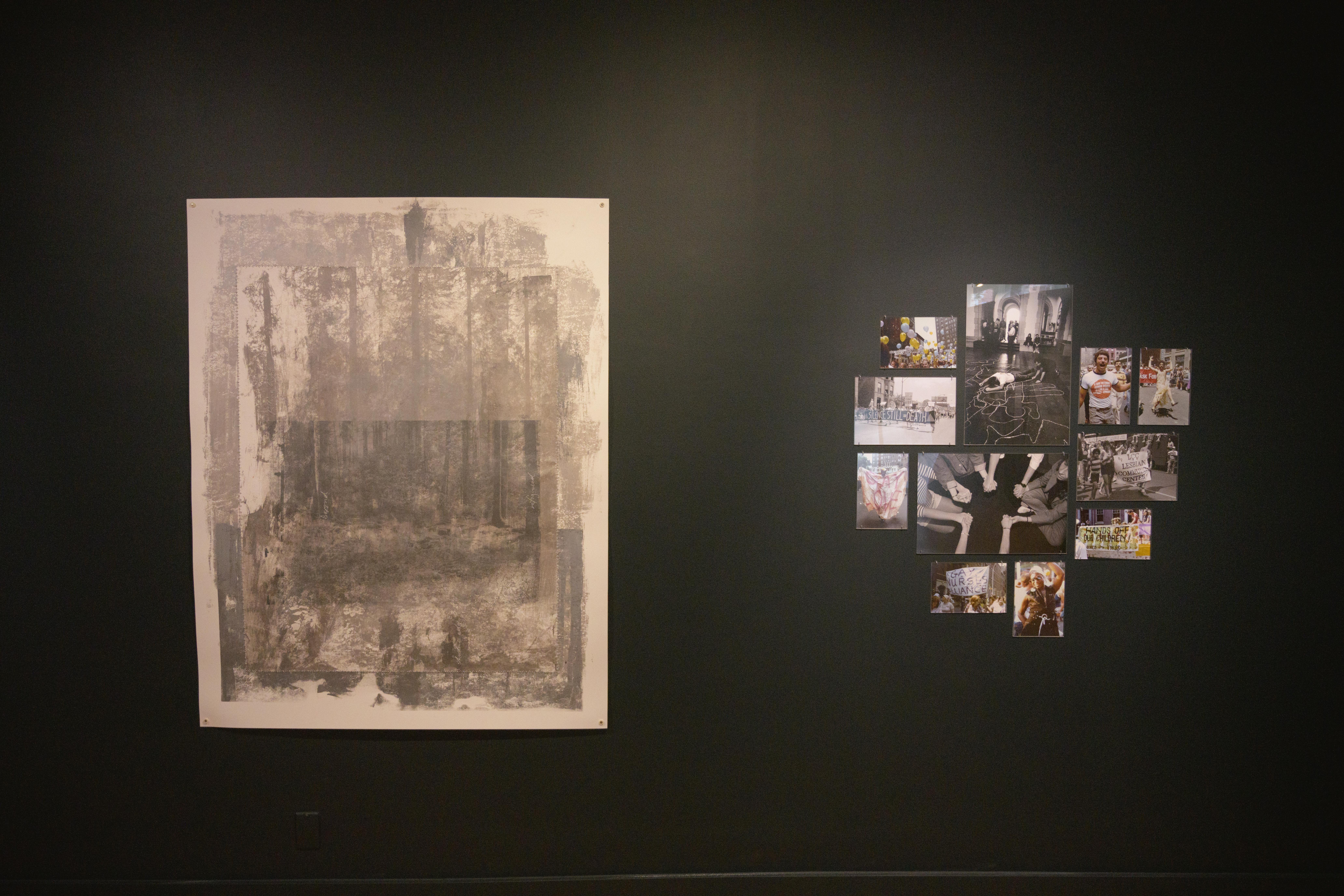
The circular format of the exhibition beginning and ending with the positioned chairs encourages gathering and conversation — an extension of the ideas of community presented within the art. The words embroidered on the screen printed images are evocative, not strung together in sentences, but rather presented as free-floating fragments. The visitor is left with the task of connecting the abstract language to the concrete, historical images of queer life in New York City and reflecting on interconnection in their own life. Above all else, Geyer wanted a place “to come together and talk.” She invites her visitors to “use the chairs that are there … for however long you need it.”

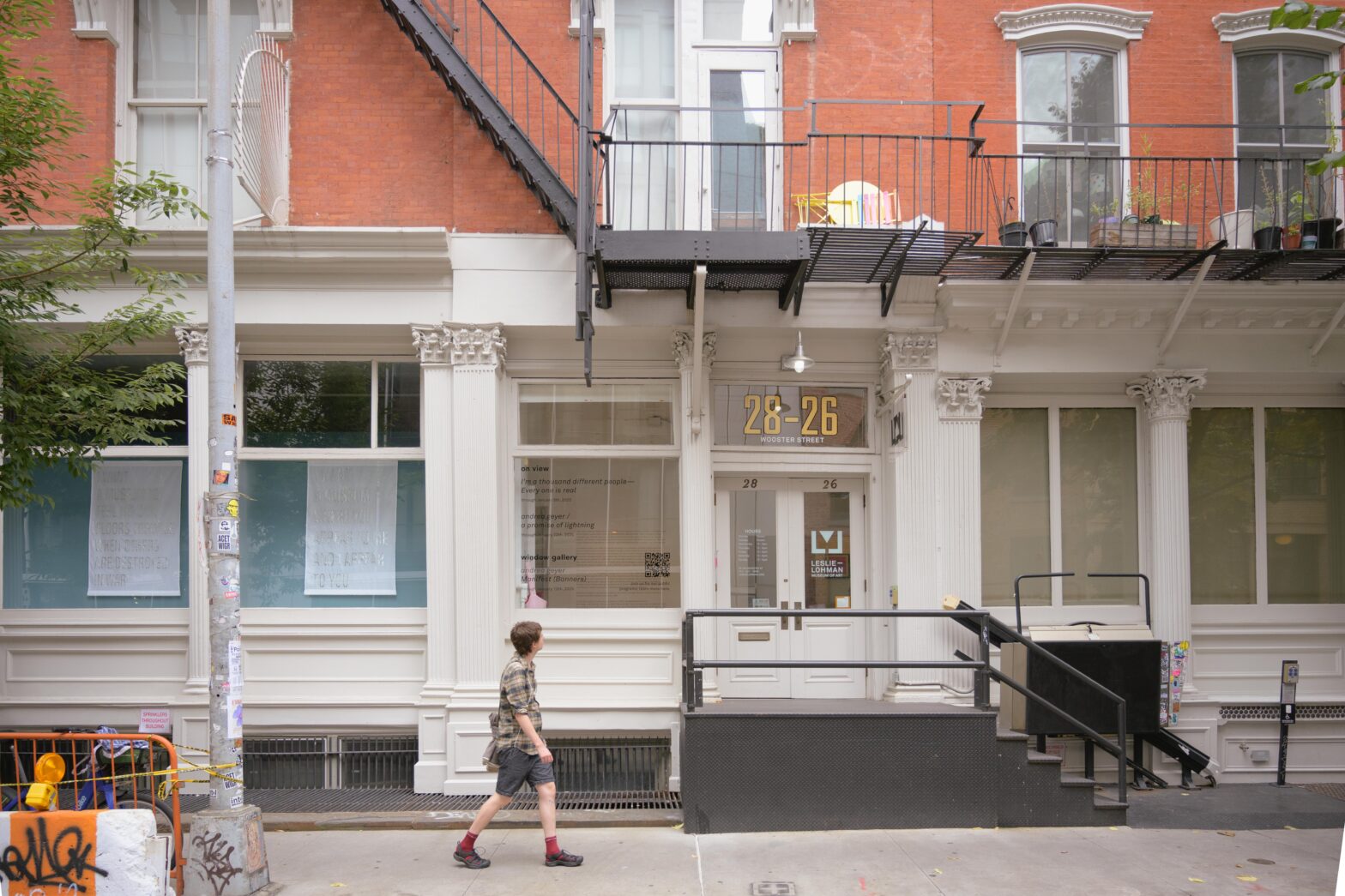




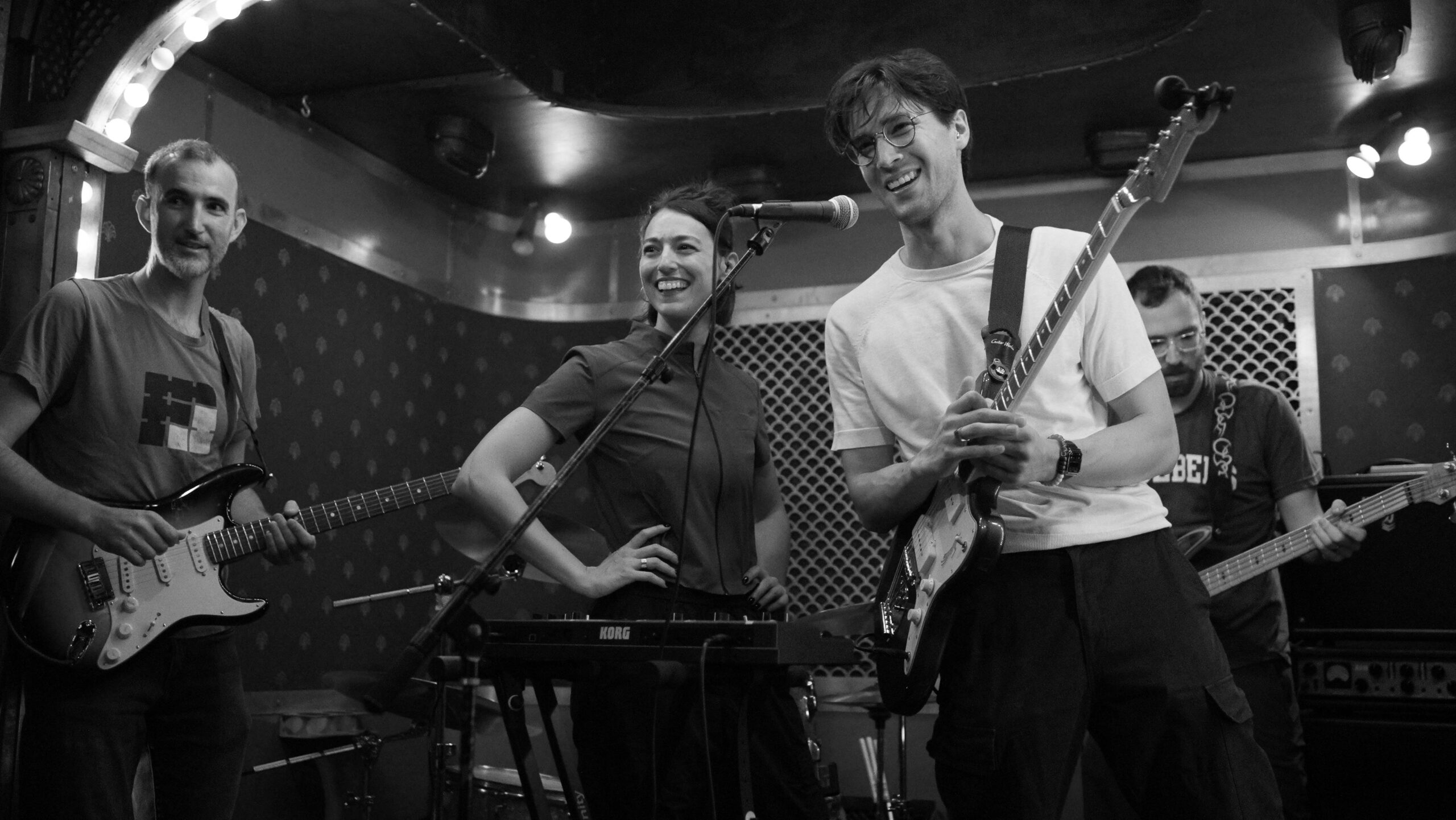
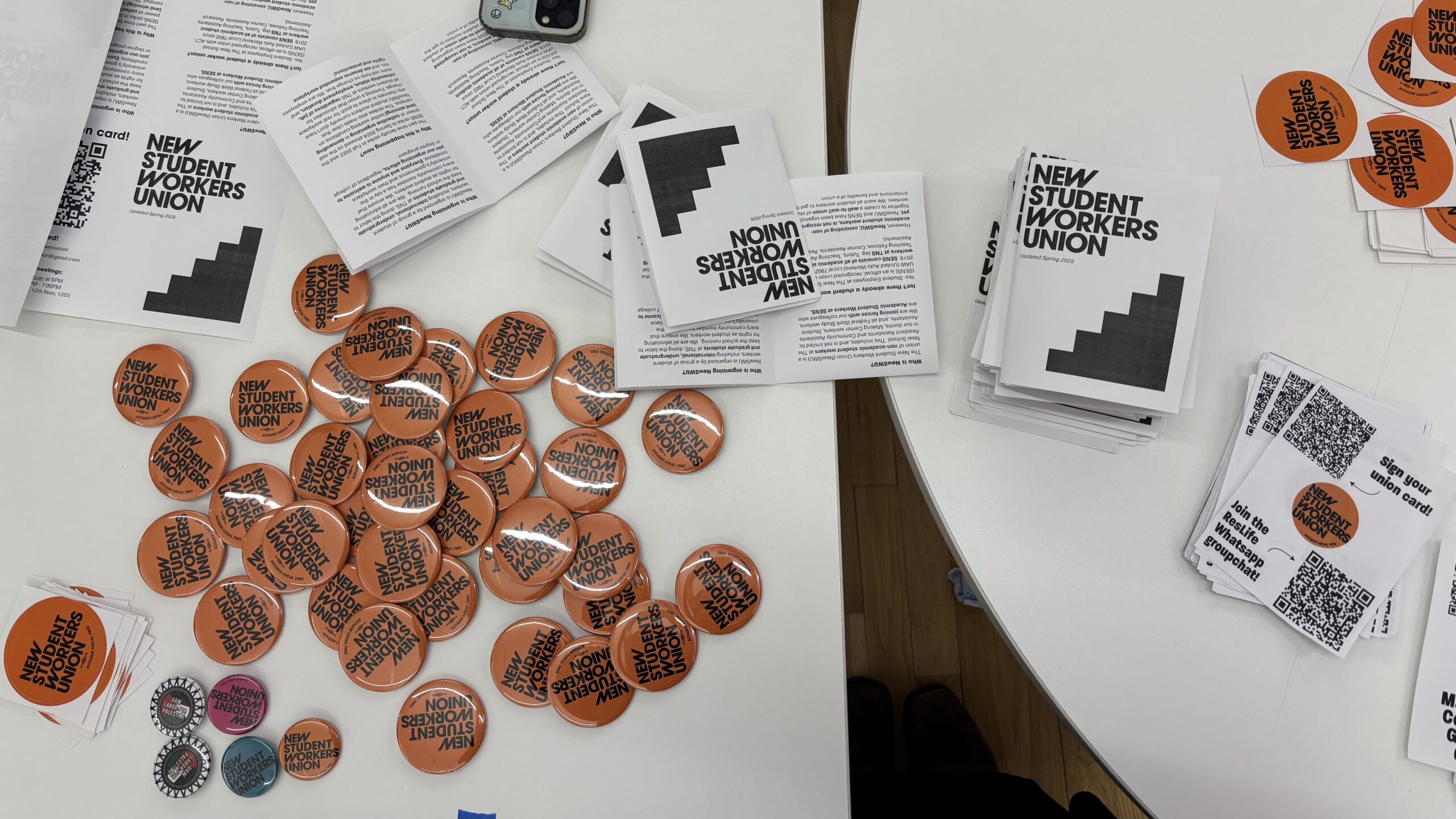
Leave a Reply